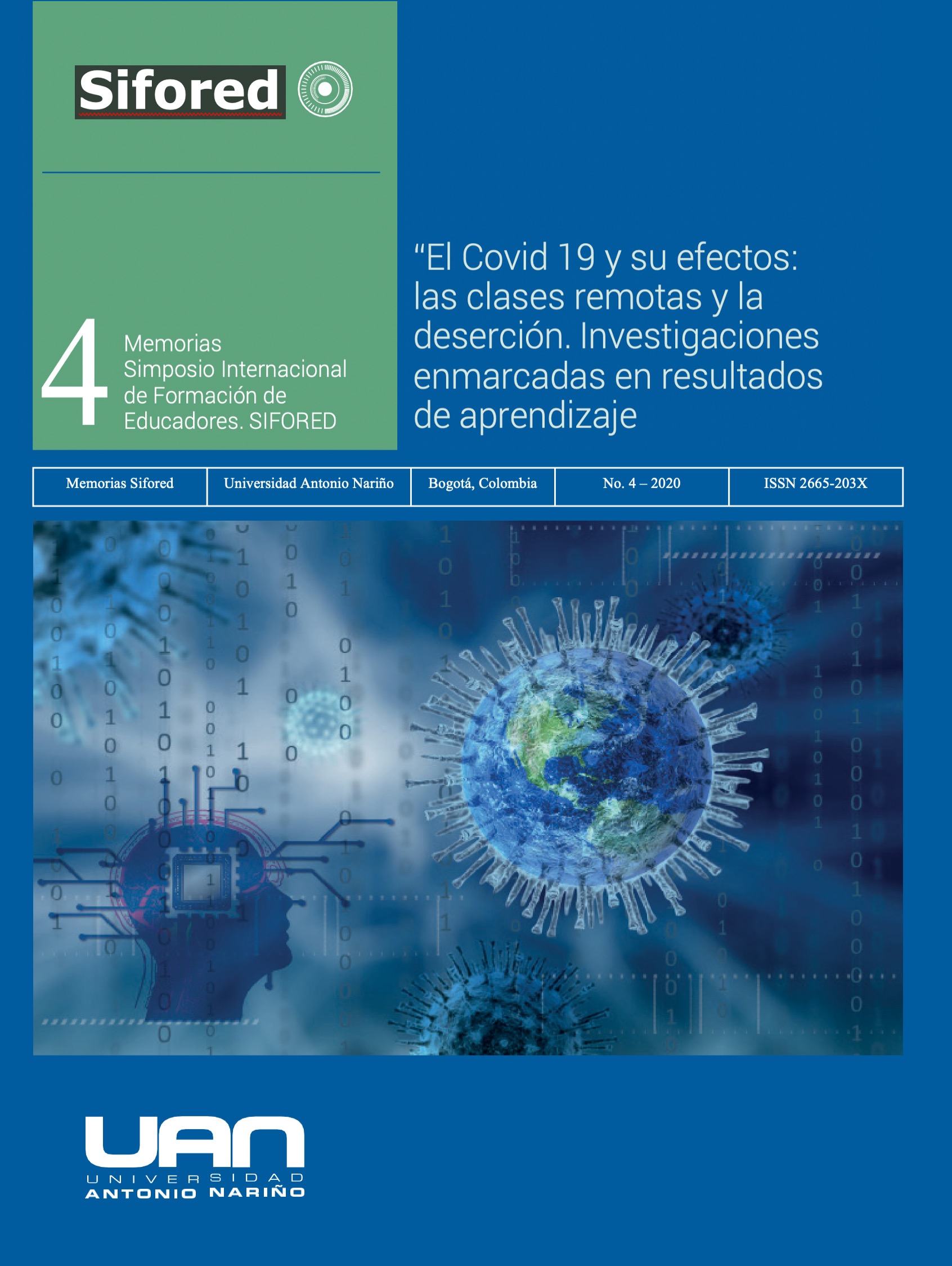El B-learning un espacio académico para fortalecer la comprensión de la lectura y escritura en los estudiantes universitarios
Keywords:
B-learning, education, ICT, reading, writingAbstract
This presentation shows the interest of a group of researchers to check, analyze and propose a route to widen the B-learning strategy in courses that, due to their characteristics, tend to improve the reading and writing competence of the students of the Bachelor's degrees who belong to the School of Educational Sciences. The academic benefits of the implementation of B-learning is the use of ICT in dynamic and interactive educational environments that promote autonomous, self-regulated and collaborative learning, with virtual or face-to-face meetings. At UNAD, the adoption of b-learning strategy is institutionalized with the 2015 Development Plan onwards, to motivate first-enrolment students, in order to influence retention and permanence levels in the educational system. The strategy is oriented in a determined number of mandatory, elective or highly complex courses. The research focuses on five courses, whose formative aims point to reading and writing processes; two of these courses are mandatory for all students in the professional and technical programs, another one fulfills the dual function of being mandatory for one program and elective for others, and two additional courses that are part of the Virtual Center for Writing, Language and Expression , which do not have the mentioned strategy; this study aims to show the need to widen the strategy to more courses that contribute to the students’ formation.
Downloads
References
Camps, A. y Castelló, B. (2013). La escritura académica en la universidad. Revista de Docencia Universitaria Vol.11 enero-abril2013. España: Revista de docencia universitaria (REDU).
Connor, K. R. (2014). Accompanying the student: The Ignatian pedagogical paradigm and prior learning. Jesuit Higher Education: A Journal, 3(1), 1.
González Aldana, Mayra Alexandra; Perdomo Osorio, Karen Vanesa; Pascuas Rengifo, Yois (2017). Aplicación de las TIC en modelos educativos blended learning: una revisión sistemática de literatura Sophia, 13, núm. 1, 144-154 http://www.redalyc.org/articulo.oa?id=413750022015
González Hernández, K. (2008). Propuesta de un programa para mejorar la comprensión de textos en estudiantes universitarios. Actualidades Investigativas en Educación (8)2. Doi: http://dx.doi.org/10.15517/aie.v8i2.9334
Ministerio de Educación Nacional (1998). Lineamientos curriculares. Lengua Castellana. Bogotá.
Pardo, J. Q., & López, V. S. (1995). Errores conceptuales en el estudio del equilibrio químico: nuevas aportaciones relacionadas con la incorrecta aplicación del principio de Le Chatelier. Enseñanza de Las Ciencias: Revista de Investigación y Experiencias Didácticas, 13(1), 72–80.
Pérez, H. (1999). Nuevas tendencias de la comprensión escrita. Santafé de Bogotá: Cooperativa Editorial magisterio.
Plan de desarrollo 2015-2019. “UNAD. Innovación y excelencia educativa para todos. Bogotá. Mayo 2015.
Posner, G. J., Strike, K. A., Hewson, P. W., & Gertzog, W. A. (1982). Accommodation of a scientific conception: Toward a theory of conceptual change. Science Education, 66(2), 211–227.
Quintana, H. (2003). La enseñanza de la comprensión lectora. Recuperado de http://coqui.metro.inter.edu/hquintan/ Comprension_lectora.html
Whittaker, G. (2004). Microwave chemistry. School Science Review, 312, 87–94
Downloads
Published
-
Abstract319
-
PDF (Español)1540
How to Cite
Issue
Section
License

This work is licensed under a Creative Commons Attribution-NonCommercial-ShareAlike 4.0 International License.


 Portal de Ciencia Abierta
Portal de Ciencia Abierta